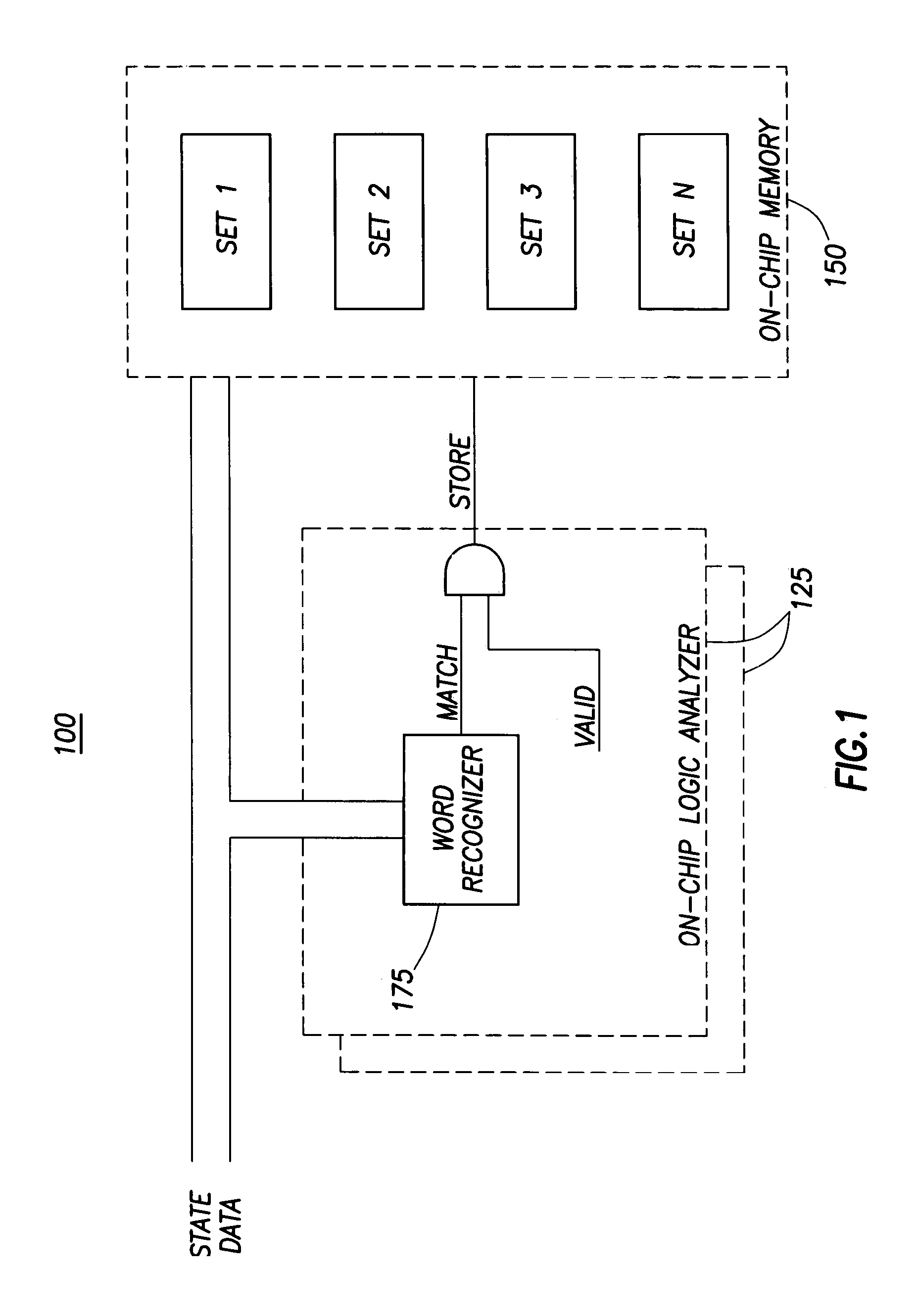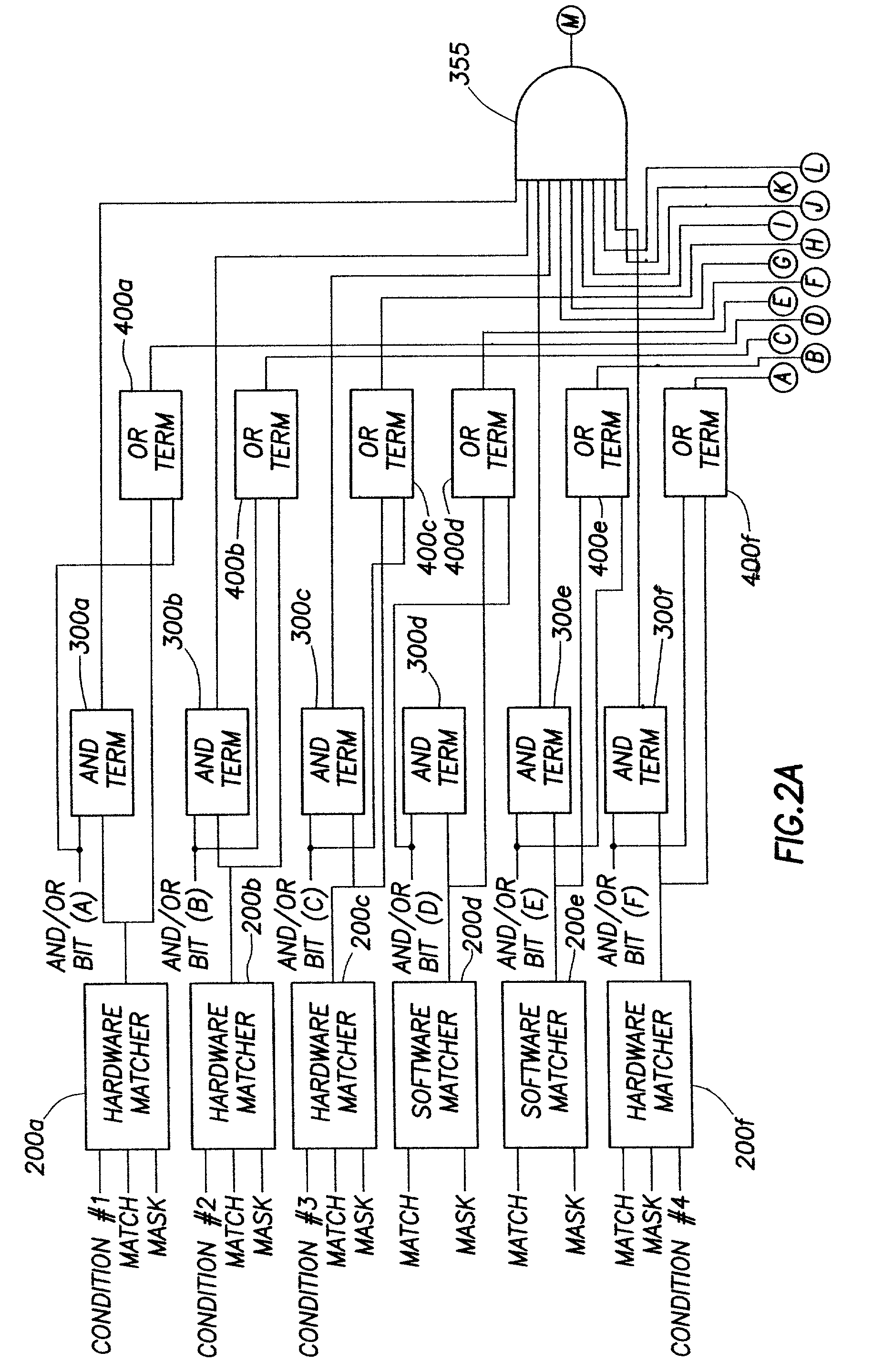Efficient word recognizer for a logic analyzer
a logic analyzer and word recognition technology, applied in the field of logic analyzers, can solve the problems of increasing the length of the lead time, increasing the cost of the logic analyzer, and reducing the flexibility of the user, so as to achieve economic cost and retain a large measure of user flexibility
- Summary
- Abstract
- Description
- Claims
- Application Information
AI Technical Summary
Benefits of technology
Problems solved by technology
Method used
Image
Examples
Embodiment Construction
[0038]Referring initially to FIG. 1, the present invention constructed in accordance with the preferred embodiment generally comprises an integrated circuit 100 that includes one or more on-chip logic analyzers 125 coupled to an on-chip memory device 150. In accordance with the preferred embodiment, the on-chip memory device 150 comprises an on-chip cache memory, and the integrated circuit comprises a processor. Various other devices may reside on the processor, including without limitation a memory controller (not shown) that controls accesses to a system memory (not shown), an I / O interface (not shown), and various other logical devices that interface with other components normally implemented in a computer system. In addition, the processor may be designed to operate in a multiple processor environment, and thus may include one or more interfaces for coupling to other processors in a computer system.
[0039]The cache memory 150 preferably comprises a cache memory located on-chip, a...
PUM
 Login to View More
Login to View More Abstract
Description
Claims
Application Information
 Login to View More
Login to View More - R&D
- Intellectual Property
- Life Sciences
- Materials
- Tech Scout
- Unparalleled Data Quality
- Higher Quality Content
- 60% Fewer Hallucinations
Browse by: Latest US Patents, China's latest patents, Technical Efficacy Thesaurus, Application Domain, Technology Topic, Popular Technical Reports.
© 2025 PatSnap. All rights reserved.Legal|Privacy policy|Modern Slavery Act Transparency Statement|Sitemap|About US| Contact US: help@patsnap.com



